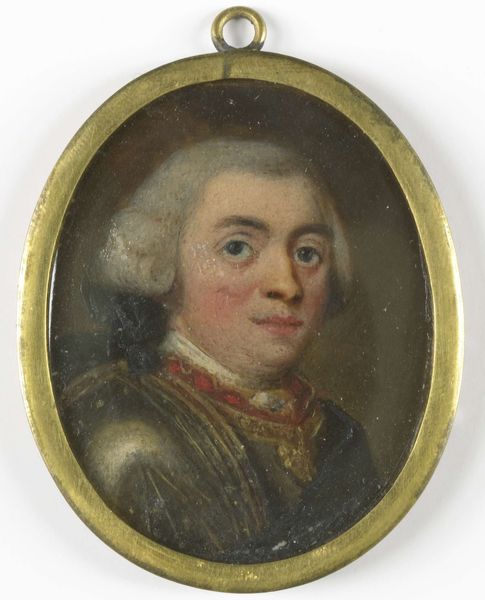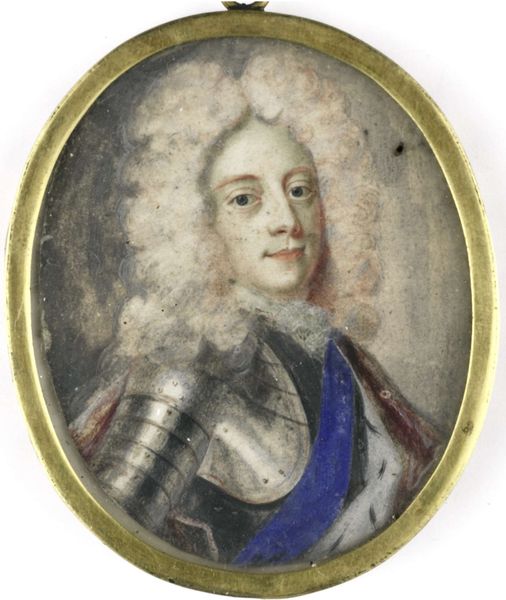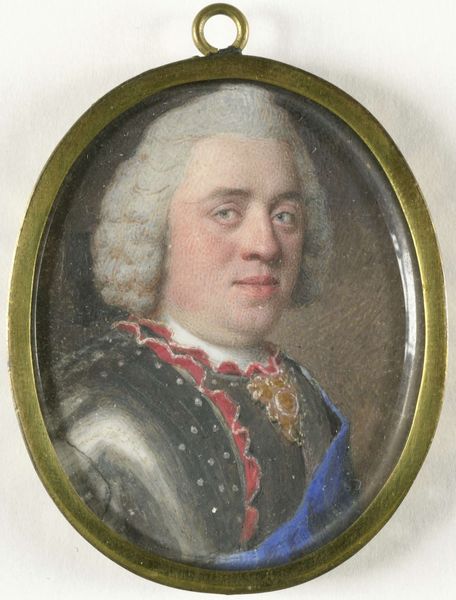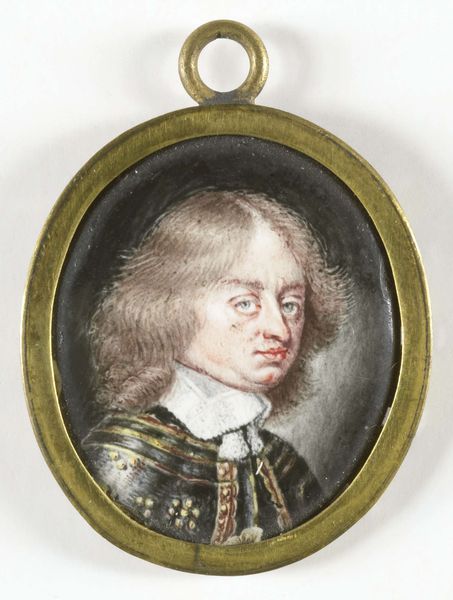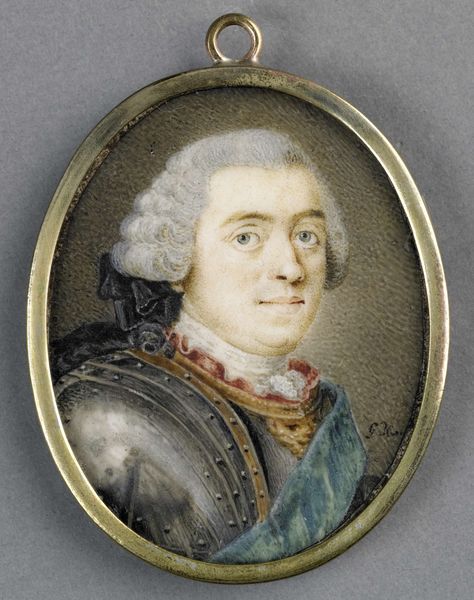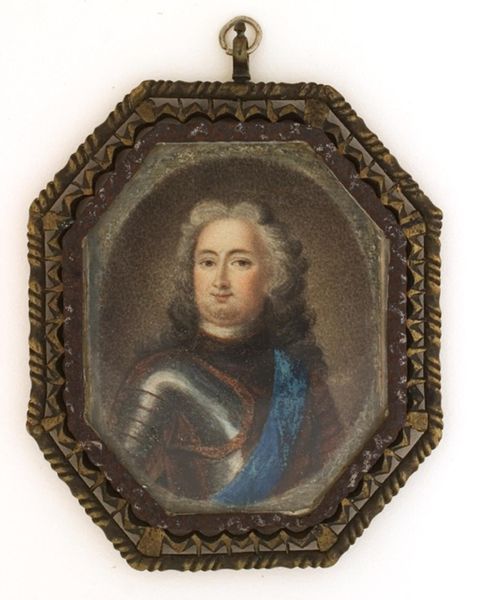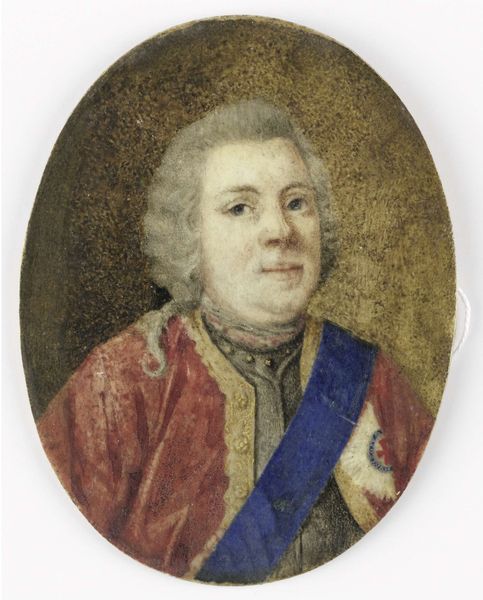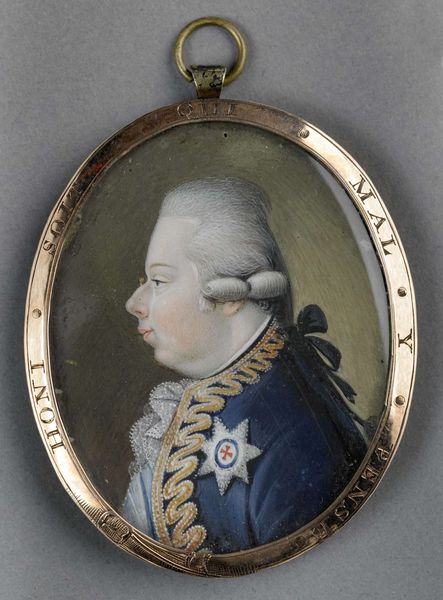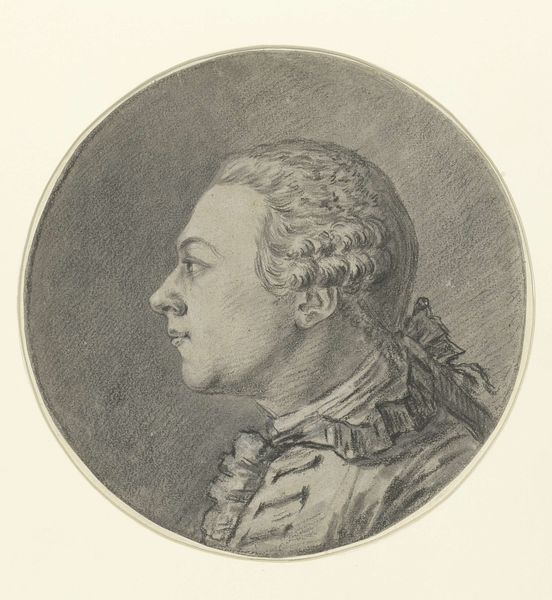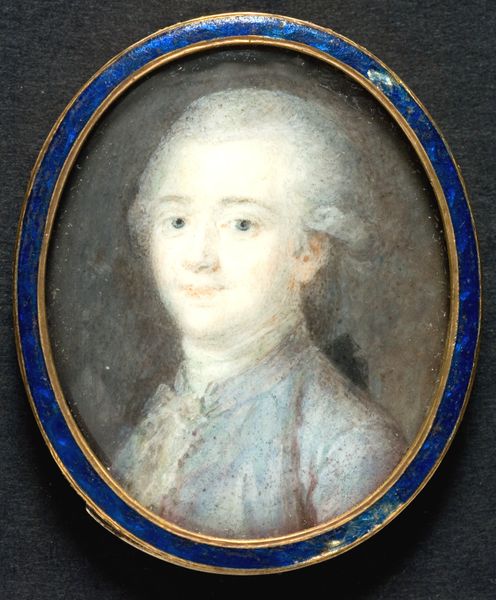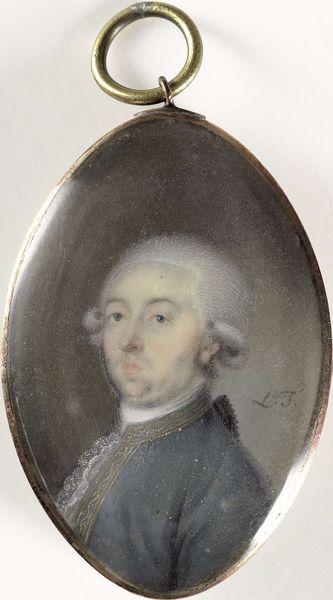
painting, oil-paint
#
portrait
#
self-portrait
#
baroque
#
painting
#
oil-paint
#
sculpture
#
miniature
Dimensions: height 2.1 cm, width 1.8 cm, height 2.8 cm, width 1.6 cm, depth 0.3 cm
Copyright: Rijks Museum: Open Domain
This miniature portrait of Willem IV, Prince of Orange-Nassau, was created by an anonymous artist, likely around the mid-18th century. Its small size and precious materials speak to its function as a personal, portable symbol of power. Made in the Netherlands, this image reflects the complex political landscape of the Dutch Republic at a time when the House of Orange was consolidating its authority. Willem IV inherited the position of Stadtholder, a role that had become increasingly powerful. The portrait itself, with its formal composition and attention to detail in the Prince's attire, reinforces his status. The miniature format suggests it was likely worn as a pendant or kept as a private token of allegiance. Understanding this image fully requires us to consider the history of the Dutch Republic, the role of the House of Orange, and the conventions of portraiture in the 18th century. Resources such as historical archives, genealogical records, and studies of Dutch art and culture can shed further light on its meaning and significance.
Comments
No comments
Be the first to comment and join the conversation on the ultimate creative platform.
